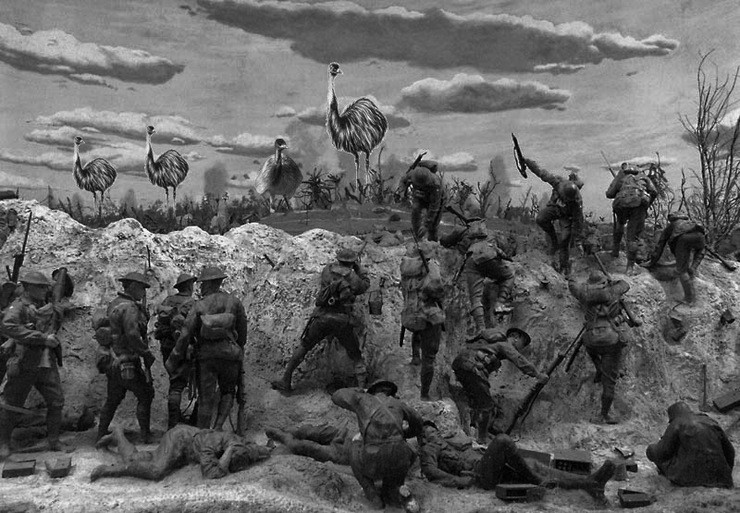THE GREAT EMU WAR - HISTORY'S STRANGEST CONFLICT?
By Chris Hall
85 years ago, a new threat emerged for the Australian government – the emu. Throughout the state of Western Australia, a scourge of these pests tore down fences, trampled crops and caused chaos in agricultural communities. The threat of this destructive wildlife caused some to describe the conflict between man and emu as all-out war.
Whilst seeming relatively harmless, Emus provided a significant ecological threat to farmers
After World War I, Australian veterans were given land in the outback as payment. Many of the former soldiers set up farms to make a living. Combined with the poor soil fertility, the Great Depression put economic strain on these farmers. What didn’t help was the government forcing them to increase their yield of wheat. The promise of subsidies from the government incentivised them to grow more, but the extra money never came. This happened for a few years, until 1932, when a horde of 20,000 emus broke into the small farming communities. During the winter, emus move from the landlocked countryside to coastal regions. This pattern was disturbed because farms were far closer to the inland breeding grounds and the readily available food proved attractive to the birds. Farmers called on the government to act until the 2nd of November 1932, when three soldiers were sent to tackle the problem, with two light machine guns and 10,000 rounds of ammunition.
Major G.P.W Meredith was put in charge of the operation. Alongside the two men under his control, he aimed to significantly reduce the emu population, providing safety for the farmers who so greatly needed the help. Despite the three soldiers’ brave efforts, the ‘war’ effort started with difficulty. After a long period of tactical planning, the soldiers tried to herd a group of fifty emus into an ambush by firing at them from outside of the guns’ range, startling them. What the soldiers didn’t know was that the emus would split into very small groups, making an ambush of a large group impossible. These failures continued until finally the band of soldiers had an opportunity. On the 4th of November, they were able to sneak up on a group of more than a thousand emus at a watering hole without getting their attention. Surely nothing could go wrong this time?
A lot did end up going wrong. After firing for a very short period of time, the guns jammed and almost all of the emus fled. Out of over a thousand emus at the watering hole, only twelve were killed that day. This moment embodied the string of failures that followed, including an occasion where the guns were loaded onto the back of a truck. (No, this was not successful either.) This eventually forced the three soldiers to withdraw on the 8th of November. Over the course of the 6 days, 2,500 rounds of ammunition were used, but fewer than 500 emus were killed. This failure was not enough to deter a second effort from the Australian government, however. Further pressure from farmers mounted on the military, leading to the launch of another operation on the 12th of November. Meredith’s team once again took to the outback, setting out to end the emu problem once and for all. This attempt lasted until December the 10th, after an overall lower number of kills per day.
Satirical image created about the 'war'
At the end of this process, fewer than 1,000 of the 20,000 emus causing the problem were killed – a success rate of less than 5%. This meant that the conflict was a waste of time, money and manpower, with no beneficial consequences. Most of the soldiers moved away from farming and border fences were used to protect the Australian population from the threat. There was a significant backlash against this in the international community, as several British environmentalists called it ‘extermination of the rare emu’. Many of the figures behind the ‘War’ were ridiculed, including Sir George Pearce, who was labelled the ‘Minister of the Emu War’ due to his support of the conflict.
This whole story may sound like some satirical comedy sketch, but sometimes truth is stranger than fiction. The war is still ridiculed to this day, as internet communities such as reddit.com/r/emuwarflashbacks mock the concept of soldiers and weapons being used on animals. Utter failure would likely be an understatement for the Emu War, as the land down under was humiliated by a pack of large flightless birds.

